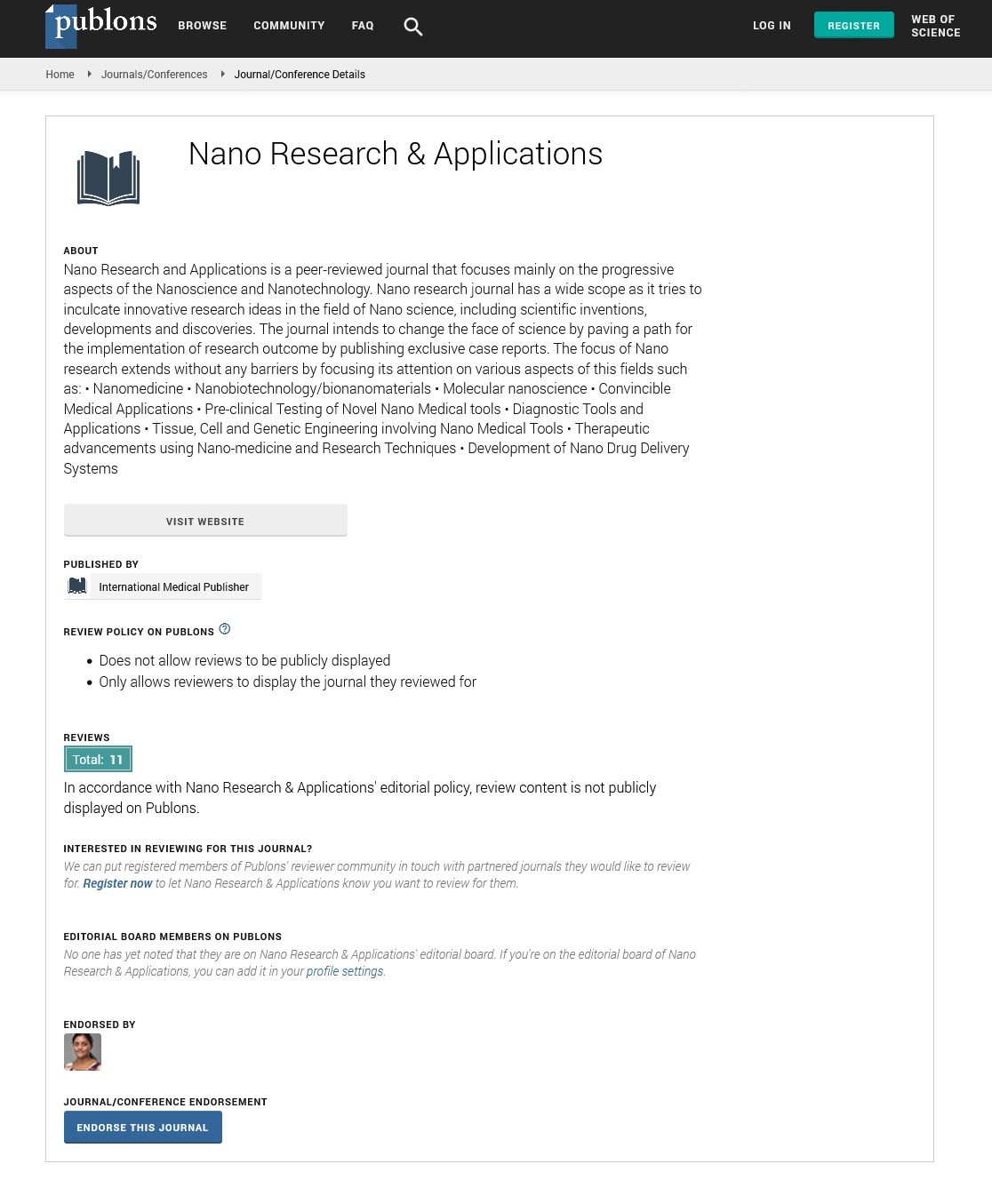ISSN : 2471-9838
Nano Research & Applications
Nanoscale optical trapping: Current challenges and future directions
Joint Event on 25th Nano Congress for Future Advancements & 12th Edition of International Conference on Nanopharmaceutics and Advanced Drug Delivery
August 16-18, 2018 | Dublin, Ireland
Carlo Bradac
University of Technology of Sydney, Australia
ScientificTracks Abstracts: Nano Res Appl
DOI: 10.21767/2471-9838-C3-014
Abstract
Probing biological processes down to the single-molecule scale, in vivo, is one of the prime yet unreached goals of biomedicine. This matters because at the most fundamental level human physiology and all biological processes are the result of intricate actions of single proteins such as enzymes, motor proteins, DNA or RNA molecules. Common fluorescence microscopy techniques employ luminescent bio-labels to image biological systems. They are ensemble methods which average over the whole population of molecules and provide a coarse overview of the process under investigation. Specialized, moleculetargeted techniques do exist. They are based on optical tweezers/traps (OTs), which allow for the manipulation of small biolabels to probe, for instance, pico-Newton forces of molecular motors such as kinesin, dynein and myosin. Whilst being a great tool, OTs are limited by the size-range of objects they can address and the forces they can exert. Classical optical trapping relies on large (~0.1-1 μm) refractive beads to work, which clashes with the push, in biomedicine, towards reaching the (sub) nanometre-scale regime of single-molecule exploration. Also, forces within living cells can be relatively large (~10 pN) and require a high-power laser in the OT; this is not ideal as it can result in cell damage. After reviewing the main limitations of current OTs, author present some of the pioneering work which they are doing to overcome these limits and develop OTs compatible with delicate biological environment and which will potentially allow for reaching size (~tens of nm) and force regimes (~hundreds of pN) unattainable with current techniques
Biography
Carlo Bradac is a Research Fellow at the University of Technology, Sydney. He studied Physics and Engineering at the Polytechnic of Milan, Italy where he achieved his Bachelor’s degree in 2004 and Master’s degree in Engineering for Physics and Mathematics in 2006. He received his PhD in Physics at Macquarie University in 2012. His research focuses on colour centres in diamond and on their potential use in quantum information technologies, biomedical applications and high-resolution single-spin sensing.
E-mail: carlo.bradac@uts.edu.au
Google Scholar citation report
Citations : 387
Nano Research & Applications received 387 citations as per Google Scholar report
Nano Research & Applications peer review process verified at publons
Abstracted/Indexed in
- Google Scholar
- China National Knowledge Infrastructure (CNKI)
- Directory of Research Journal Indexing (DRJI)
- WorldCat
- Publons
- Secret Search Engine Labs
- Euro Pub
Open Access Journals
- Aquaculture & Veterinary Science
- Chemistry & Chemical Sciences
- Clinical Sciences
- Engineering
- General Science
- Genetics & Molecular Biology
- Health Care & Nursing
- Immunology & Microbiology
- Materials Science
- Mathematics & Physics
- Medical Sciences
- Neurology & Psychiatry
- Oncology & Cancer Science
- Pharmaceutical Sciences
